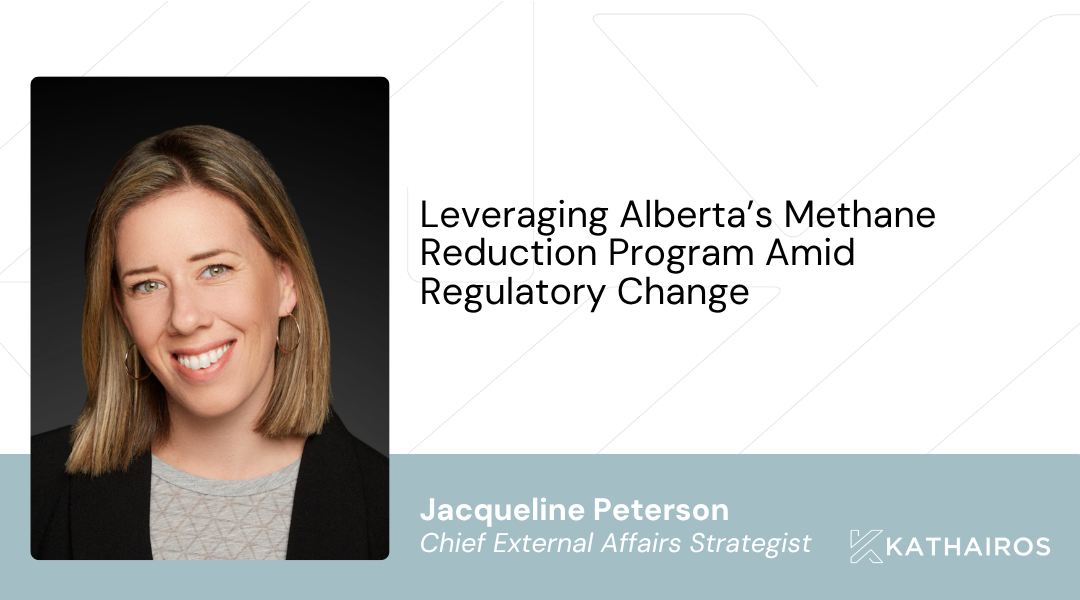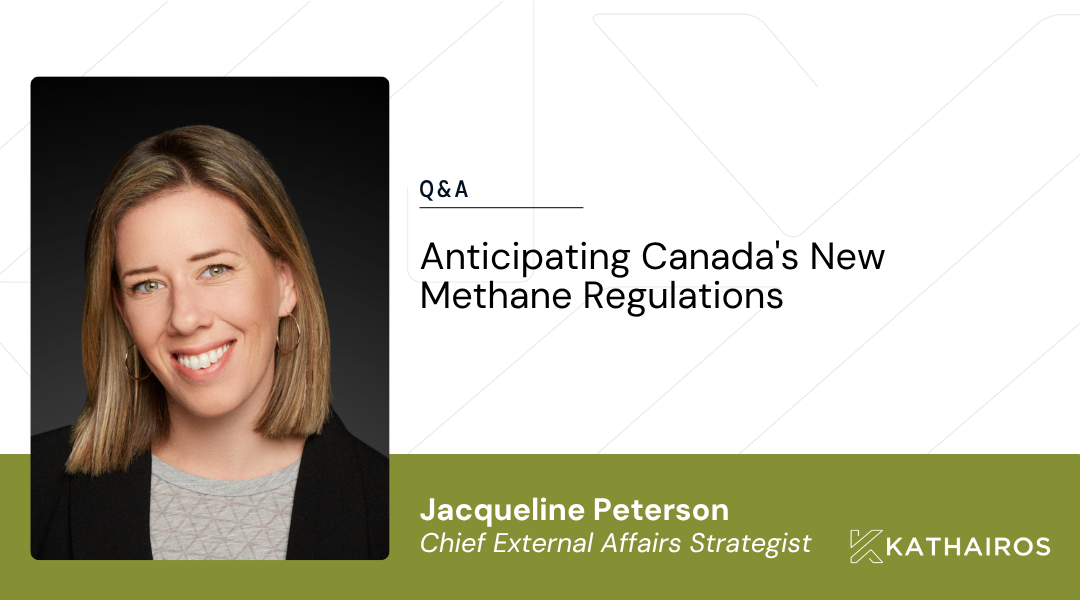
Kathairos has emerged as the leading North American solution for methane elimination from pneumatics, with more than 2,400 systems in operation across North America and over 70 major oil and gas producer partners.
In this post
Installing emissions-reduction technologies is one thing— benefitting from them in compliance markets, such as the one in Alberta, is another story altogether.
While carbon pricing may seem somewhat straightforward, the processes for developing and serializing offsets can be complex and unfamiliar to companies wishing to participate in the carbon market. Kathairos makes it easy for oil and gas producers to do so with confidence and free from administrative burden, while maximizing the value of their emissions abatement.
The following outlines the steps involved in turning emission-reduction technology into serialized emission offsets, or 'carbon credits,' that can be sold or used in Alberta’s compliance market, among others.
Assess the Policy and Regulatory Framework
Is your emissions reduction project eligible under the offset or carbon credit system in your governing jurisdiction?
In order to generate offsets for a particular project type (i.e. zero-bleed pneumatics conversions), an approved ‘quantification protocol’ must be in place, which outlines the calculations, emission sources, and data management obligations required. If the relevant quantification protocol does not perfectly align with your project, you will need to obtain government or regulatory authorization to deviate from the existing protocol.
In the case of Kathairos' nitrogen-based technology for eliminating methane emissions from pneumatic devices, our deviation protocol has been developed and accepted by Alberta Environment and Parks, allowing us to generate and manage offsets on behalf of our customers with ease.
Develop and Submit an ‘Emission Offset Project Plan’
Following the relevant quantification protocol and supplementary policy documents, it's time to develop and submit an in-depth Emission Offset Project Plan detailing how you will be reducing emissions and – critically – how you will document and calculate these emission reductions.
Reduce Emissions
Do your thing to eliminate, mitigate, abate, and beyond. Keep track of all relevant data and records along the way, while detailing all associated emission reductions in a formal project report.
Verify Data
When you're ready to serialize and trade or sell the offsets you've accumulated, you must first hire an independent third-party verifier to certify your data and the emission reductions you're reporting.
Register and Serialize Offsets
Once verified, proceed with submitting all relevant documentation to Alberta Carbon Registries or similar such entity. Following review, each of your offsets will be assigned with a serial number.
‘Sell’ Offsets
Following serialization, organizations deemed as ‘heavy emitters’ are able to apply their offsets toward their compliance obligations, thereby ‘retiring’ the offset. Smaller emitters are able to transfer (i.e. sell) their offsets to an organization looking to purchase offsets.
The market price for these offsets is generally less than the legislated price on carbon. If it were the same, organizations would simply pay the carbon price equivalent into the TIER fund in Alberta, or the carbon tax agency in their jurisdiction.
Many organizations will count on their net offset value being approximately 85-90% of the current federally-mandated carbon price. Offset pricing can further fluctuate according to demand, available credit supply, and time of year.
Repeat and Record
Organizations may serialize their credits on an ongoing basis for the length of their offset project term, generally set at the maximum allowable timeframe of eight years, pending continued offset eligibility.
Meticulous ongoing record-keeping and project data storage is imperative, should regulators ever seek to re-verify the serialized offsets.
Sound simple enough? Not exactly. Let us help.
Explore more posts from Kathairos



%20For%20website.png)